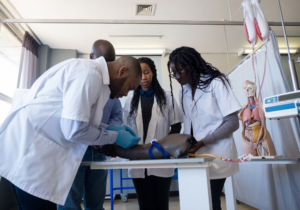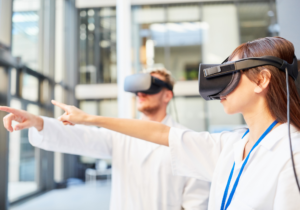In the fast-evolving field of healthcare, the adoption of technology in medical training is not just innovative; it’s imperative. Today’s medical students and professionals are witnessing an unprecedented integration of technological devices into their learning and practice—a shift that promises to enhance the quality of healthcare delivery across the globe.
 The Importance of Technology in Modern Medical Training
The Importance of Technology in Modern Medical Training
The landscape of medical training is undergoing a significant transformation, thanks to technology. Traditional learning methods are being supplemented—sometimes even replaced—by advanced devices designed to provide immersive, interactive, and highly effective training experiences. This evolution is preparing future healthcare providers for the complex and dynamic challenges of the real world by equipping them with the skills and knowledge needed to excel.
Main Types of Devices in Medical Training
The realm of medical training technology is vast, but at its core, there are three main types of devices that are revolutionizing how education is delivered in this sector:
- Simulation Equipment
- Virtual Reality (VR) Tools
- Mobile Apps
Simulation Equipment
Simulation equipment offers a hands-on experience without the risks associated with real-life procedures. These devices range from basic models that mimic human anatomy to sophisticated systems that simulate surgical procedures, emergency situations, and more.
Benefits: Safe learning environment, real-time feedback, and opportunity for repeated practice.
Features: High-fidelity models, customizable scenarios, performance tracking.
Applications: Surgical training, clinical skill development, team training exercises.
 Virtual Reality (VR) Tools
Virtual Reality (VR) Tools
VR in medical training transcends traditional learning boundaries, offering an immersive environment that replicates clinical settings and patient interactions. By donning a VR headset, learners are transported into meticulously crafted scenarios that require their engagement, decision-making, and procedural skills.
Benefits: Enhanced engagement, improved spatial awareness, reduced training costs.
Features: 360-degree visuals, interactive modules, scalable learning experiences.
Applications: Anatomical education, procedural practice, empathy and communication training.
Mobile Apps
The ubiquity of smartphones has made mobile apps an invaluable tool in medical education. Apps can offer theoretical knowledge, quizzes, flashcards, and even augmented reality (AR) features to facilitate on-the-go learning.
Benefits: Accessibility, flexibility, personalized learning paths.
Features: Interactive content, progress tracking, community features.
Applications: Continuous learning, revision and assessment, patient education.
The Future of Medical Training Technology
Looking ahead, the trajectory of medical training technology is geared towards even more immersive and interactive experiences. Augmented reality (AR), artificial intelligence (AI)-driven simulations, and even robotics present fascinating possibilities for further enhancing the quality and efficacy of medical education.
The integration of technological devices into medical training marks a pivotal shift towards a more proficient, effective, and adaptable healthcare workforce. As we continue to explore and expand the capabilities of simulation equipment, VR tools, and mobile apps, the future of healthcare looks promisingly bright. For medical students and professionals, staying abreast of these advancements is not just beneficial; it’s essential to shaping their careers and the overall future of medicine.

